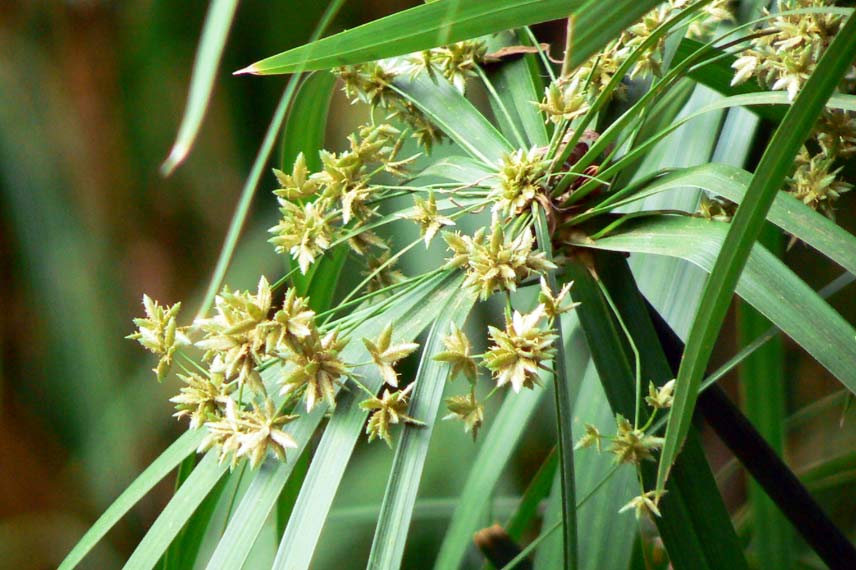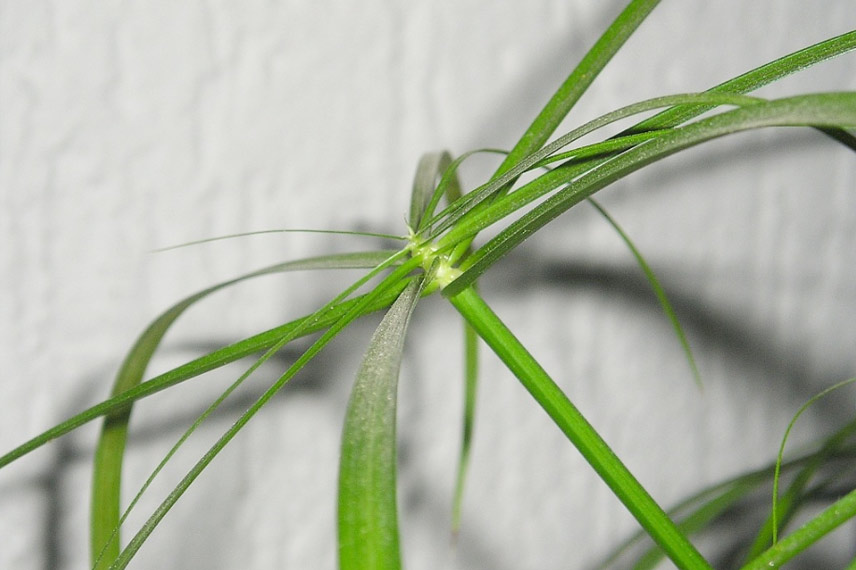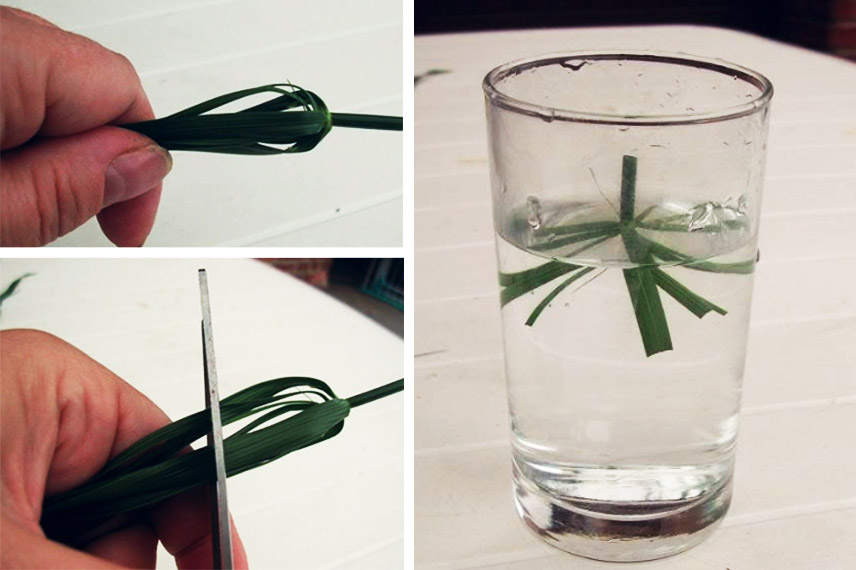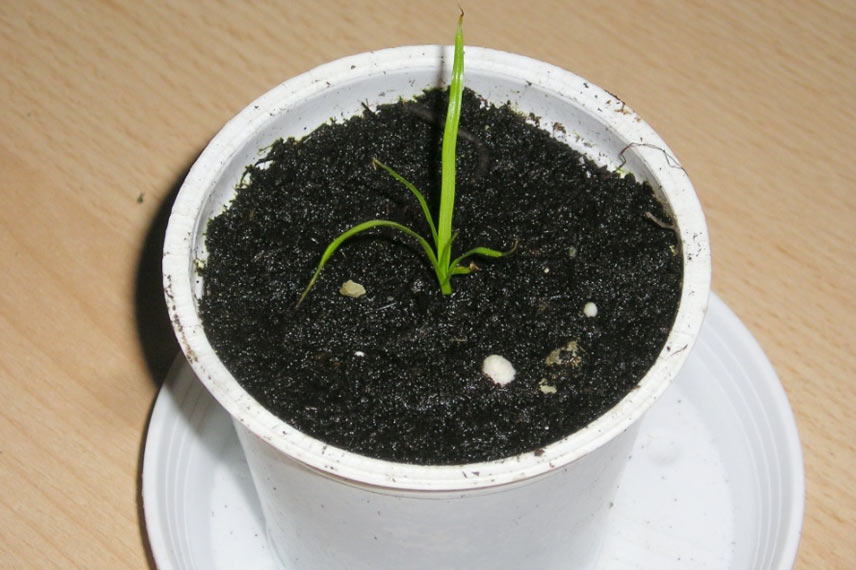The papyrus is an ornamental plant, relatively easy to grow, with a graphic and slender appearance. A semi-aquatic plant, it can be grown both outdoors and indoors. The Cyperus alternifolius, a close cousin of the Cyperus papyrus, is a variety commonly grown indoors and can be propagated by cuttings. Its propagation by cuttings is extremely easy to carry out and allows you to obtain many new plants to replant.
Here is our step-by-step tutorial on how to take a papyrus cutting.
Which variety of papyrus to propagate?
Note that the Nile papyrus and the umbrella sedge, also called papyrus, are often confused with each other. While the two plants look similar overall, they do not propagate in the same way. Indeed, the Cyperus papyrus (Nile papyrus) propagates by division of the stump, while the Cyperus alternifolius (umbrella sedge), propagates by division but also by head cuttings. This is also the case for all varieties of sedges (Cyperus longus, Cyperus glaber, etc.). The most iconic and widely cultivated variety remains the Cyperus alternifolius.

Cyperus alternifolius © Dinesh Valke - Flickr
In summary, only the Nile papyrus and all its cultivars (Cyperus papyrus 'Cleopatra', Cyperus papyrus 'Akhenaton'...), cannot be propagated by cuttings.
When to take papyrus cuttings?
The umbrella sedge is a marginal plant that has the particularity of reproducing very easily by head cuttings. The cutting can in fact be taken at any time of the year, with a success rate close to 100%!
Required materials
- A pruning shear.
- A pair of scissors.
- A vase, glass, or jam jar.
- A pot.
- Clay pebbles or gravel.
- Garden soil and compost.
- A saucer or deep tray.
- A hand watering can.
How to take papyrus cuttings?
Taking papyrus cuttings is a very simple operation, provided you follow the steps described below.

Stem and head of Cyperus alternifolius © Maja Dumat - Flickr
1 - Using the pruning shear, cut several mature stems, preferably non-flowering and in good condition, from your Cyperus plant.
2 - With your scissors, cut the stems 10 cm from the head.
3 - Trim each leaf by two-thirds and remove the inflorescence if the stem happens to be flowering.
4 - Once this is done, immerse the cutting head down in a medium-sized vase (a glass or jam jar will also work perfectly).
5 - Place the cutting in a bright location where it is clearly visible so you can monitor the water level.

Head cuttings of Cyperus alternifolius © Jungle Rebel - Flickr
Tips
- To maximise your chances of success, use non-calcareous water for your head cuttings. Prefer rainwater or mineral water and place a small piece of charcoal in the vase to prevent the water from stagnating.
- To speed up root development, place your cutting in the light and at a minimum temperature of 20 °C.
At this stage, all you have to do is wait for your cutting to develop roots, ensuring it always has enough water. The new roots should appear quickly (usually within 15 days), followed closely by the emergence of very young leaves of Cyperus.
Good to know: the original leaves of your cutting will eventually turn brown, and the stem itself may do the same. This is completely normal and should not worry you.
Potting the Cyperus cutting
After about 4 to 5 weeks, the cutting develops new stems that emerge from the water and unfold into the air. It is then time to transplant your cuttings into a medium-sized terracotta pot.
- Place a pebble over the drainage hole to prevent the substrate from escaping.
- Add a layer of gravel or clay pebbles at the bottom of the pot, about 2 cm high.
- Fill the rest of the pot (up to 5 or 6 cm from the rim) with a substrate composed of a mixture of 1/3 garden soil, 1/3 leaf compost, and 1/3 heather soil.
- Remove the old leaves and the original stem of the cutting, keeping only the new shoots and roots.
Good to know: adding garden soil to the substrate helps acclimate your cutting to its future environment if you decide to replant it later in the garden.
Once planting is complete, place the pot in a saucer filled with water.

Cyperus alternifolius in a pot © Maja Dumat - Flickr
Ensure the water level in the saucer remains constant, adjusting it regularly. As a semiaquatic plant, the papyrus must have continuously moist substrate. Its growth, as well as the beauty of its leaves, depend directly on this moisture.
The papyrus grows very quickly, and you should soon have a beautiful, graphic, and elegant clump. If you wish to keep it in a pot, place it outdoors (preferably near a pond) once the risk of frost has passed. In winter, bring the pot indoors. For more information on this, check out our detailed advice on growing papyrus in pots.
If you choose to transplant your young umbrella sedge plant into the garden, note that it can survive temperatures as low as -6 °C, provided it has suitable growing conditions. Growing sedge in the ground is therefore best suited to the warmest regions of the country.
































Comments